Ultimate Guide to Garden Maintenance in Yeading
Introduction to Garden Maintenance
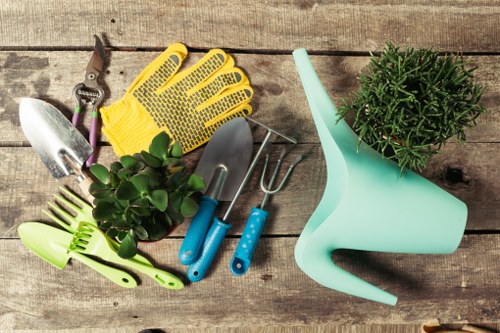
Maintaining a beautiful garden in Yeading doesn't have to be a daunting task. With the right knowledge and tools, anyone can transform their outdoor space into a vibrant and thriving oasis. Whether you're a seasoned gardener or a beginner, understanding the essentials of garden maintenance is crucial for ensuring your plants remain healthy and your garden prospers throughout the year.
Yeading, known for its lush greenery and community spirit, offers the perfect environment for gardening enthusiasts. The climate and soil conditions here are conducive to a wide variety of plants, making it an ideal place to cultivate your green thumb.
In this comprehensive article, we'll explore the key aspects of garden maintenance in Yeading, providing you with practical tips and strategies to keep your garden in top shape.
Seasonal Garden Care
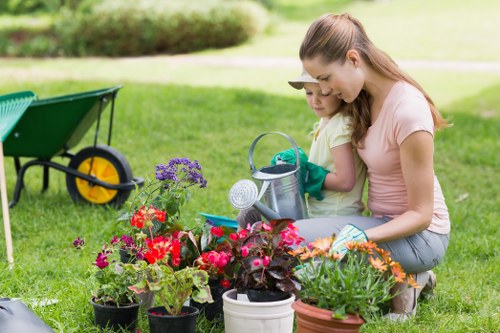
Seasonal changes significantly impact your garden's health and appearance. Understanding how to adapt your maintenance routine throughout the year is essential for thriving plants and a stunning garden.
Spring Maintenance
- Soil Preparation: Begin by testing your soil's pH levels and nutrient content. Amend the soil as necessary to provide a fertile foundation for your plants.
- Planting: Spring is the ideal time to plant a variety of flowers, vegetables, and shrubs. Choose species that are well-suited to Yeading's climate.
- Pruning: Remove any dead or damaged branches from trees and shrubs to encourage healthy growth.
By addressing these tasks in spring, you'll set the stage for a vibrant and productive garden throughout the growing season.
Essential Gardening Tools
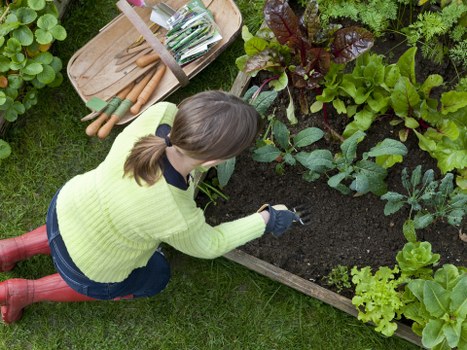
Having the right tools is fundamental to effective garden maintenance. Investing in quality equipment not only makes tasks easier but also ensures better results.
Must-Have Tools:
- Hand Trowel: Perfect for digging small holes and transplanting seedlings.
- Pruning Shears: Essential for trimming and shaping plants.
- Garden Fork: Useful for loosening soil and removing weeds.
- Watering Can: Ensure your plants receive adequate moisture, especially during dry spells.
- Gloves: Protect your hands from thorns, dirt, and potential irritants.
With these tools at your disposal, maintaining your Yeading garden will become a more manageable and enjoyable experience.
Soil Health and Fertilization
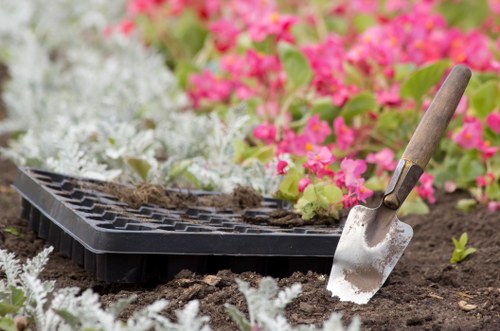
Healthy soil is the cornerstone of a thriving garden. Proper soil maintenance involves regular testing, amending, and ensuring adequate drainage.
Soil Testing:
Conduct soil tests at least once a year to determine its pH and nutrient levels. Yeading's soil can vary, so understanding its composition will help you make informed decisions about fertilization and plant selection.
Fertilization Tips:
- Choose the Right Fertilizer: Select a fertilizer that matches your soil test results and the needs of your plants.
- Application Timing: Apply fertilizers during the growing season to maximize their effectiveness.
- Organic Options: Consider using compost or organic fertilizers to enrich the soil naturally.
Maintaining soil health will ensure your plants receive the nutrients they need to grow strong and resilient.
Watering Strategies
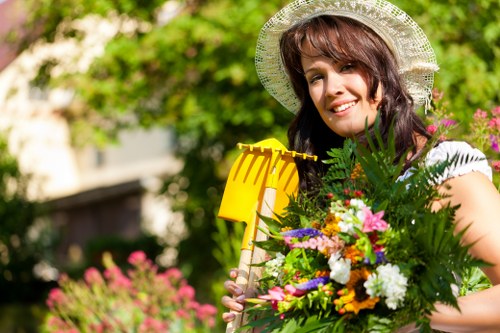
Proper watering is critical for plant health. Overwatering or underwatering can lead to a host of problems, including root rot and wilting.
Efficient Watering Techniques:
- Drip Irrigation: Delivers water directly to the plant roots, reducing evaporation and conserving water.
- Mulching: Apply a layer of mulch to retain moisture in the soil and regulate temperature.
- Morning Watering: Water your garden in the early morning to minimize evaporation and allow plants to absorb moisture before the heat of the day.
Implementing these strategies will help maintain consistent moisture levels, promoting healthy plant growth.
Pest and Disease Management

Gardens are susceptible to various pests and diseases that can harm plants and disrupt their growth. Effective management involves prevention, monitoring, and treatment.
Preventive Measures:
- Healthy Plants: Maintain plant health through proper watering and fertilization to make them less vulnerable to pests.
- Cleanliness: Remove fallen leaves and debris that can harbor pests and diseases.
- Natural Predators: Encourage beneficial insects like ladybugs and bees that help control pest populations.
By taking preventive steps, you can reduce the likelihood of infestations and infections in your Yeading garden.
Pruning and Trimming Techniques

Regular pruning and trimming are essential for maintaining plant health and aesthetics. These practices help shape plants, remove dead or diseased parts, and promote new growth.
Best Practices:
- Sanitize Tools: Always clean your pruning tools before and after use to prevent the spread of diseases.
- Right Time to Prune: Different plants have specific pruning seasons. Research the optimal times for each type of plant in your garden.
- Proper Techniques: Make clean cuts at the right angle to encourage healing and minimize damage to the plant.
Mastering pruning techniques will enhance the overall appearance and longevity of your garden plants.
Lawn Care Essentials

A well-maintained lawn serves as the foundation of a beautiful garden. Regular care ensures the grass remains lush, green, and resilient.
Key Lawn Maintenance Activities:
- Mowing: Mow your lawn regularly, keeping the grass at an optimal height to promote healthy growth.
- Watering: Ensure your lawn receives sufficient water, especially during dry periods. Early morning watering is ideal.
- Fertilizing: Apply lawn fertilizers to provide essential nutrients and encourage thick, green growth.
- Weed Control: Remove weeds promptly to prevent them from competing with your grass for nutrients and water.
Consistent lawn care will result in a vibrant and inviting outdoor space that enhances the overall look of your Yeading garden.
Plant Selection and Landscaping

Selecting the right plants is crucial for creating a harmonious and sustainable garden. Consider factors such as climate, soil type, and maintenance requirements when choosing plants for your Yeading garden.
Choosing Suitable Plants:
- Hardiness: Select plants that are well-suited to Yeading's climate and can withstand local weather conditions.
- Variety: Incorporate a mix of perennials, annuals, shrubs, and trees to add diversity and visual interest.
- Low-Maintenance Options: Opt for plants that require minimal care, allowing you to enjoy your garden without excessive upkeep.
Thoughtful plant selection will not only enhance the beauty of your garden but also simplify maintenance tasks.
Mulching for a Healthier Garden

Mulching is a simple yet effective practice that offers numerous benefits for your garden. It helps retain soil moisture, suppress weeds, and regulate soil temperature.
Benefits of Mulching:
- Moisture Retention: Mulch reduces evaporation, ensuring that plants receive consistent moisture.
- Weed Suppression: A layer of mulch inhibits the growth of weeds, minimizing competition for resources.
- Soil Protection: Mulch acts as a barrier against extreme temperatures, protecting plant roots from heat and cold.
Applying mulch regularly will contribute to a healthier and more sustainable garden environment in Yeading.
Composting and Soil Enrichment

Composting is an eco-friendly way to enrich your soil with essential nutrients. By recycling organic waste, you can create a natural fertilizer that enhances soil fertility.
Starting a Compost Pile:
- Choose a Location: Select a dry, shaded spot in your garden for your compost pile.
- Layering: Alternate layers of green materials (like grass clippings and vegetable scraps) with brown materials (such as dried leaves and branches).
- Maintenance: Turn the compost regularly to aerate it and speed up the decomposition process.
Engaging in composting not only benefits your garden but also promotes environmental sustainability in Yeading.
Integrated Pest Management (IPM)

Integrated Pest Management (IPM) is a holistic approach to controlling pests that minimizes the use of chemical pesticides. By combining various strategies, IPM ensures effective and environmentally friendly pest control.
IPM Strategies:
- Biological Control: Introduce natural predators to keep pest populations in check.
- Cultural Practices: Implement gardening techniques that reduce the likelihood of pest infestations, such as crop rotation and proper plant spacing.
- Mechanical Control: Use physical barriers or traps to prevent pests from reaching your plants.
- Chemical Control: As a last resort, apply targeted and minimal pesticide treatments to address severe pest problems.
Adopting IPM practices will help maintain a balanced and healthy ecosystem in your Yeading garden.
Pruning Trees and Shrubs

Regular pruning of trees and shrubs is essential for maintaining their shape, promoting growth, and preventing potential hazards. Proper pruning techniques ensure the health and longevity of your plants.
Pruning Tips:
- Identify Dead or Diseased Branches: Remove any branches that show signs of damage or disease to prevent further spread.
- Shape and Structure: Trim branches to enhance the natural shape and structure of the tree or shrub.
- Timing: Prune during the appropriate season, typically late winter or early spring, to minimize stress on the plant.
Effective pruning contributes to a well-maintained and aesthetically pleasing garden in Yeading.
Maintaining Garden Paths and Structures

Garden paths and structures such as pergolas, trellises, and fences add functionality and charm to your outdoor space. Regular maintenance ensures they remain safe and visually appealing.
Path Maintenance:
- Weeding: Keep garden paths free of weeds to prevent tripping hazards and maintain a clean appearance.
- Repairing Surfaces: Fix any cracks or uneven areas in paved paths to ensure smooth and safe walking surfaces.
- Mulching: Apply mulch to garden paths to reduce weed growth and enhance the overall look of your garden.
Structure Upkeep:
- Inspection: Regularly inspect garden structures for signs of wear, damage, or rot.
- Cleaning: Keep structures clean by removing debris, dirt, and moss that can cause deterioration.
- Sealing and Staining: Apply sealants or stains to wooden structures to protect them from the elements and extend their lifespan.
Proper maintenance of garden paths and structures enhances the functionality and beauty of your Yeading garden.
Lighting Your Garden

Garden lighting not only adds ambiance but also enhances safety and security. Thoughtfully placed lights can highlight key features and create a welcoming atmosphere.
Types of Garden Lighting:
- Path Lights: Illuminate walkways to ensure safe navigation through your garden at night.
- Spotlights: Highlight specific plants, trees, or garden structures for visual interest.
- String Lights: Add a festive and cozy feel to outdoor seating areas and pergolas.
Installation Tips:
- Plan Your Layout: Determine the areas you want to highlight and plan the placement of your lights accordingly.
- Choose Energy-Efficient Options: Opt for LED lights or solar-powered fixtures to reduce energy consumption.
- Safety First: Ensure all electrical connections are secure and weather-resistant to prevent hazards.
Incorporating lighting into your garden design will enhance its beauty and functionality, making it enjoyable even after sundown.
Weed Control Strategies

Weeds compete with your garden plants for nutrients, water, and light, often hindering their growth. Effective weed control is essential for maintaining a healthy and attractive garden.
Natural Weed Control Methods:
- Hand Weeding: Regularly remove weeds by hand to prevent them from establishing deep roots.
- Mulching: Apply a thick layer of mulch to suppress weed growth and retain soil moisture.
- Cultural Practices: Implement crop rotation and proper spacing to reduce the chances of weed infestations.
Chemical Weed Control:
- Selective Herbicides: Use herbicides that target specific weed types without harming your garden plants.
- Application Timing: Apply herbicides during active growth periods for maximum effectiveness.
- Follow Instructions: Always adhere to the manufacturer's guidelines to ensure safe and effective use of herbicides.
Combining these strategies will help keep weeds at bay, ensuring your Yeading garden remains lush and well-maintained.
Creating a Sustainable Garden

Sustainability in gardening involves practices that are environmentally friendly and resource-efficient. Adopting sustainable methods contributes to the health of your garden and the broader ecosystem in Yeading.
Sustainable Gardening Practices:
- Rainwater Harvesting: Collect and store rainwater for garden irrigation, reducing reliance on municipal water sources.
- Native Plants: Incorporate native plant species that are well-adapted to the local climate and require less maintenance.
- Organic Gardening: Use organic fertilizers and pest control methods to promote a healthy and chemical-free garden environment.
- Composting: Recycle garden waste into nutrient-rich compost to enhance soil fertility naturally.
By embracing sustainable gardening practices, you contribute to a healthier environment and create a resilient and thriving garden in Yeading.
Maintaining Garden Furniture and Decor

Garden furniture and decor add character and functionality to your outdoor space. Regular maintenance ensures they remain in good condition and continue to enhance your garden's aesthetic.
Care Tips for Garden Furniture:
- Cleaning: Clean furniture regularly to remove dirt, dust, and debris. Use appropriate cleaning agents based on the material.
- Protection: Protect furniture from harsh weather by using covers or storing them indoors during extreme conditions.
- Repairs: Address any damage promptly to prevent further deterioration and extend the lifespan of your furniture.
Garden Decor Maintenance:
- Inspect Regularly: Check garden decor items for signs of wear or damage and make necessary repairs.
- Cleaning: Keep decorative elements clean to maintain their appearance and prevent buildup of grime.
- Seasonal Updates: Refresh garden decor seasonally to keep your outdoor space looking vibrant and current.
Maintaining garden furniture and decor enhances the overall appeal and functionality of your Yeading garden, making it a welcoming space for relaxation and entertainment.
Advanced Gardening Techniques

For those looking to elevate their gardening skills, advanced techniques can lead to even more impressive results. These methods help optimize plant growth and garden productivity.
Proper Pruning:
Beyond basic pruning, advanced techniques involve shaping plants to promote airflow and light penetration, reducing the risk of diseases and encouraging robust growth.
Companion Planting:
- Benefits: Certain plants grow better together, enhancing each other's growth and deterring pests.
- Examples: Planting marigolds with tomatoes to repel nematodes or basil with peppers to enhance flavor and growth.
Hydroponics:
Hydroponic gardening allows you to grow plants without soil, using nutrient-rich water solutions. This method can be particularly useful in urban settings or areas with poor soil quality.
Implementing advanced gardening techniques can significantly improve the health and productivity of your Yeading garden, offering a more rewarding gardening experience.
Gardening for Wildlife

Encouraging wildlife in your garden creates a balanced ecosystem and adds life to your outdoor space. Beneficial creatures like bees, butterflies, and birds play crucial roles in pollination and pest control.
Attracting Beneficial Wildlife:
- Pollinators: Plant a variety of flowers that bloom at different times to provide a continuous food source for bees and butterflies.
- Birds: Install birdhouses and bird feeders to attract birds that help control insect populations.
- Habitat Features: Incorporate features like ponds, rocks, and log piles to create habitats for amphibians and insects.
Benefits of a Wildlife-Friendly Garden:
- Natural Pest Control: Wildlife helps manage pest populations, reducing the need for chemical interventions.
- Enhanced Biodiversity: A diverse range of species contributes to a resilient and healthy garden ecosystem.
- Enjoyment: Observing wildlife adds an element of joy and tranquility to your gardening experience.
By designing your Yeading garden to support wildlife, you create a vibrant and sustainable outdoor environment that benefits both your plants and the local ecosystem.
Conclusion and Next Steps

Maintaining a garden in Yeading is a rewarding endeavor that brings beauty, tranquility, and a sense of accomplishment. By following the outlined maintenance practices, you can ensure your garden remains healthy, vibrant, and sustainable throughout the year.
Whether you're enhancing your lawn, managing pests, or implementing sustainable practices, each step contributes to a thriving garden ecosystem.
Ready to transform your outdoor space? Contact us today to book your garden maintenance service and experience the best of Yeading gardening expertise.